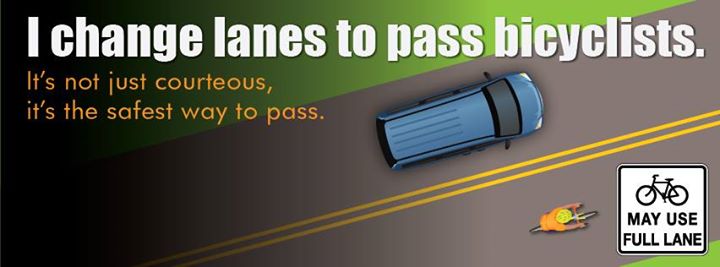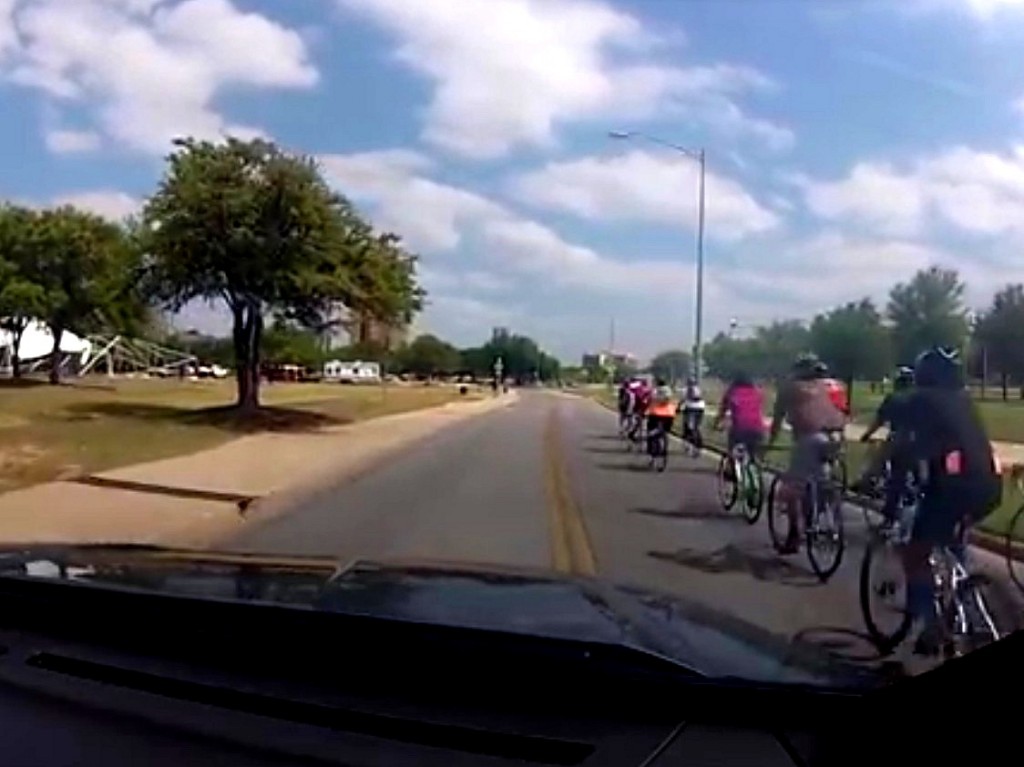A chicken-and-egg relationship exists between common public beliefs and the interpretation of laws. For bicyclists, our legal right to the road may hinge on the prevailing concept of operations for marked travel lanes. Bicyclist advocates and safety instructors hold a concept of operations where other drivers change lanes to pass bicyclists safely, and where it is reasonable or even recommended for a bicyclist to ride in a lane position that makes it visibly clear that same-lane passing is not viable. Some motoring advocates, however, hold a concept of operations where motorists pass bicyclists without changing lanes, and where bicyclists must stay far enough to the right to facilitate this, even when a marked lane is too narrow for same lane passing to be safe (and it’s usually not). Given the human inclination to confirmation bias, the difference between these opposite and deeply held concepts of operation can result in completely opposite interpretations of traffic law, regardless of how carefully or clearly the law may seem to be worded. The difference in concepts also results in opposite perceptions of what needs to change about the law.
It is therefore of strategic importance to bicyclist advocates that we persuade public officials to adopt the safer, lane-change-passing concept of operations for typical travel lanes. To this end, bicyclist advocates in North Carolina – and across the country – are seeing progress. At a February 18 meeting with BikeWalk NC, NCDOT’s State Traffic Engineer Kevin Lacy explained his views on safe passing. “I agree that same-lane passing is unsafe,” he said. Lacy went on to suggest that he would support a law requiring motorists to change lanes to pass bicyclists, similar to a bill that is currently before the Iowa legislature. Bicycle and Pedestrian Division Director Lauren Blackburn explained that NCDOT endorses lane-change passing as the preferred, best practice. “It’s already in the study report,” she said, referring to the Draft Resolution portion of the report, which includes the language “Motorists should use other lanes to pass cyclists.” During the same meeting, NCDOT’s Chief Engineer Mike Holder told BikeWalk NC that after internal discussions that included NCDOT Secretary Nick Tennyson, NCDOT has decided not to promote or otherwise support legislation requiring bicyclists to stay on the right side of a marked lane. (Nor, he said, would NCDOT pursue or promote legislating permit requirements for groups.) Kevin Lacy and Lauren Blackburn both expressed a preference to see the law on bicyclist lane position clarified in a way that would protect bicyclists’ right to control a travel lane by riding in its center, but acknowledged that the debate over what that language should be wasn’t likely to make further progress at this time. (Lacy expressed his belief that restricting bicyclists from the left half of the lane would increase passing distances and bicyclist safety on higher speed roads; bicyclist advocates view any such restriction as undermining bicyclists’ ability to exercise defensive lane positioning and creating new legal problems for bicyclists.)
Legislation aside, NCDOT officials’ endorsement of lane control and next-lane passing as reasonable and preferred safe practices opens up the door for more meaningful education messages at the state level targeting motorists, bicyclists, police and transportation professionals. Lauren Blackburn expressed support for the content in BikeWalk NC’s Group Bicycling Skills and Techniques guide, and made plans to work with BikeWalk NC on educational projects in the future as funding and opportunities present themselves. BikeWalk NC is currently looking for partners to help develop video presentations of the Skills and Techniques materials, which a number of cycling organizations have said would be useful to them. BikeWalk NC is also in the process of soliciting input from ride leaders across the state on best practices for organizing and leading rides; look for an online request for information survey in the next week or two. One thing that the HB232 Study made abundantly clear is that there is a wealth of knowledge among the cycling community state-wide, and that the real subject matter experts who are out there already riding have important and persuasive things to say. Thanks go to all of you who are speaking up and shaping the public’s understanding of better bicycling.

